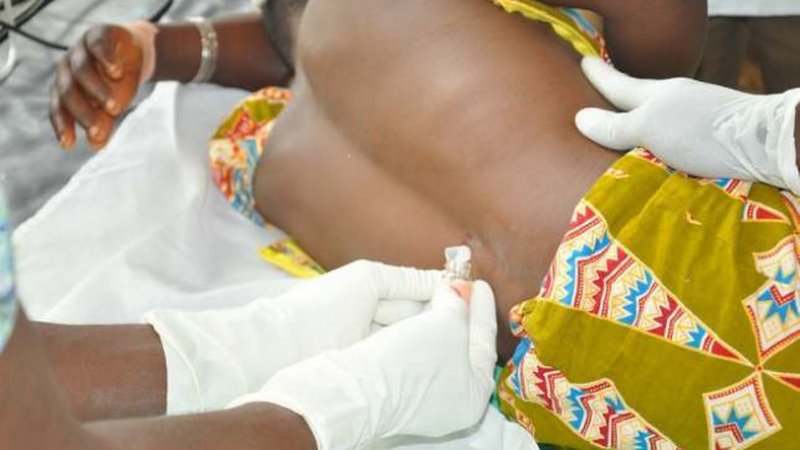Every year, tens of people die from the deadly Cerebrospinal Meningitis (CSM) disease in Northern Ghana especially the Upper West Region.
The annual havoc wrecked by the disease in Northern Ghana, often dominated both local and national media space and attracting attention from the government, development partners, civil society, the business community, and other philanthropists.
This then results in mobilization of resources required to combat the spread of the infectious disease, which causes death among 10-15 percent of patients diagnosed with the disease according to the World Health Organisation (WHO).
COVID-19 and CSM
The Upper West Region lies in the Africa Meningitis Belt hence prone to Seasonal Outbreaks occurring from November to April every year.
However, since the emergence of COVID-19 in Ghana on March 12, 2020, the global pandemic has stolen the usual attention given to CSM away to itself and has maintained that to date.
All efforts and resources are channelled at fighting the pandemic to the detriment of the equally deadly or even more deadly disease in our local context.
Statistics
In 2017, the Upper West Region recorded a total of 425 cases of CSM and 54 deaths and in 2018, the number of cases increased slightly to 428 with a total number of deaths decreasing to 37.
In 2019, the total number of cases and deaths both declined to 354 cases and 16 deaths respectively, then, in 2020 when COVID-19 emerged and succeeded in shifting attention and resources to itself, CSM secretly claimed 56 lives out of a total of 421 cases recorded in the region.
Meanwhile, in the same year, COVID-19 recorded a total of 97 cases with just three deaths.
Comparatively, since March 12th, 2020 till August 18th, 2021, there are 519 confirmed cases of COVID-19 in the Upper West Region with 19 deaths whereas that of CSM stands at 582 cases and 57 deaths. So, from 2017 to August 2021, CSM recorded a total of 1,789 cases out of which 164 persons lost their lives.
Health Authorities View
Mr John Viannie Maakpe, the Upper West Regional Health Promotion Officer, said the usual publicity in respect of CSM did not happen this year because they recorded only one death as compared to previous years.
He attributed the low fatality rate to early reporting of cases to health facilities which according to him was achieved through continued public education and availability of drugs.
He, however, admitted that they were facing funding constraints as a result of the absence of donations towards the fight of the disease this year, which according to him was affecting effective surveillance and monitoring.
Testing of Cases
With respect to COVID-19, Mr Maakpe said the region now has a testing centre here in the Wa Municipal Hospital, which has addressed the challenge in transporting samples to Accra or Kumasi for testing which came with delays in the release of results for treatment.
Meanwhile, the region, which lies in the Africa Meningitis Belt has been plagued with the infectious disease for decades now, and yet, it has no testing centre of its own, instead, it carries samples to Tamale for testing; a distance of about 304 km.
A situation that is detrimental to the fight against the disease. This, the Regional Health Promotion Officer, admitted the region needed a testing centre located in the region to facilitate the easy and fast release of results, hence, speedy treatment of confirmed cases.
What is CSM
According to the WHO, Meningitis is a serious infection of the meninges; the membranes covering the brain and spinal cord. It is a devastative disease and remains a public health challenge.
It said the disease can be caused by many different pathogens including bacteria, fungi, or viruses, but the highest global burden is seen with bacterial meningitis.
Several different bacteria including Streptococcus pneumonia, Haemophilus influenza, Neisseria meningitides are the most frequent ones that can cause meningitis.
Neisseria meningitides, causing meningococcal meningitis, is the one with the potential to produce large epidemics according to the WHO. It said there were 12 serogroups of Neisseria meningitides that have been identified, six of which (A, B, C, W, X, and Y) can cause epidemics.
In 2020, serotype X was the one behind the outbreak in the Upper West Region which resulted in a total of 421 cases recorded and 56 deaths.
Symptoms
Symptoms of CSM, according to the WHO, are a stiff neck, high fever, confusion, headaches, vomiting, and sensitivity to light.
Even with early detection and onset of adequate treatment of the disease, WHO says 5-10 percent of patients die, typically within 24 to 48 hours after the onset of symptoms.
Mode of Transmission
Transmission of CSM is from person-to-person and this may be through droplets of respiratory or throat secretions of infected persons or those who carry the pathogen.
Close or prolonged contact activities such as kissing, sneezing or coughing on another person, or living in close quarters (such as a dormitory, sharing eating or drinking utensils) with an infected person aided in the spread of the disease.
The disease has an average incubation period of four days, but can range between two and ten days.
Prevention
The WHO says to prevent and control CSM, there is the need to be vaccinated or immunized against it.
It said vaccines have been around for more than 40 years and have been undergoing improvement overtime.
However, there is no universal vaccine against meningococcal disease and this is because the disease exists in strains and so the vaccines are strain specific and have varied degrees of protection for certain durations, it added.
There are three types of vaccines namely, Polysaccharide vaccines (used during the response to outbreaks and mainly in Africa), Conjugate vaccines (used in prevention through routine immunization schedules and prevention campaigns) and Protein based Vaccine which has been introduced into the routine immunization schedule and used in outbreak response.
CSM is still there and thriving in secrecy, so it is important to give equal attention and resources to COVID-19 and CSM to protect lives.
We must not lose sight of the fact that it is an annual disease.
The public must know that early reporting to health facilities is very important to save lives, hence they must report immediately they begin to experience any of the symptoms.
It is equally important to note that symptoms of CSM are similar to that of COVID-19; the only difference is the stiffness of the neck which is a symptom of CSM.
From the statistics above, one could clearly deduce that CSM has a more devastative impact on the region as compared to COVID-19; hence, to relent on the publicity will be dangerous to the fight especially with regards to mobilization of resources.



